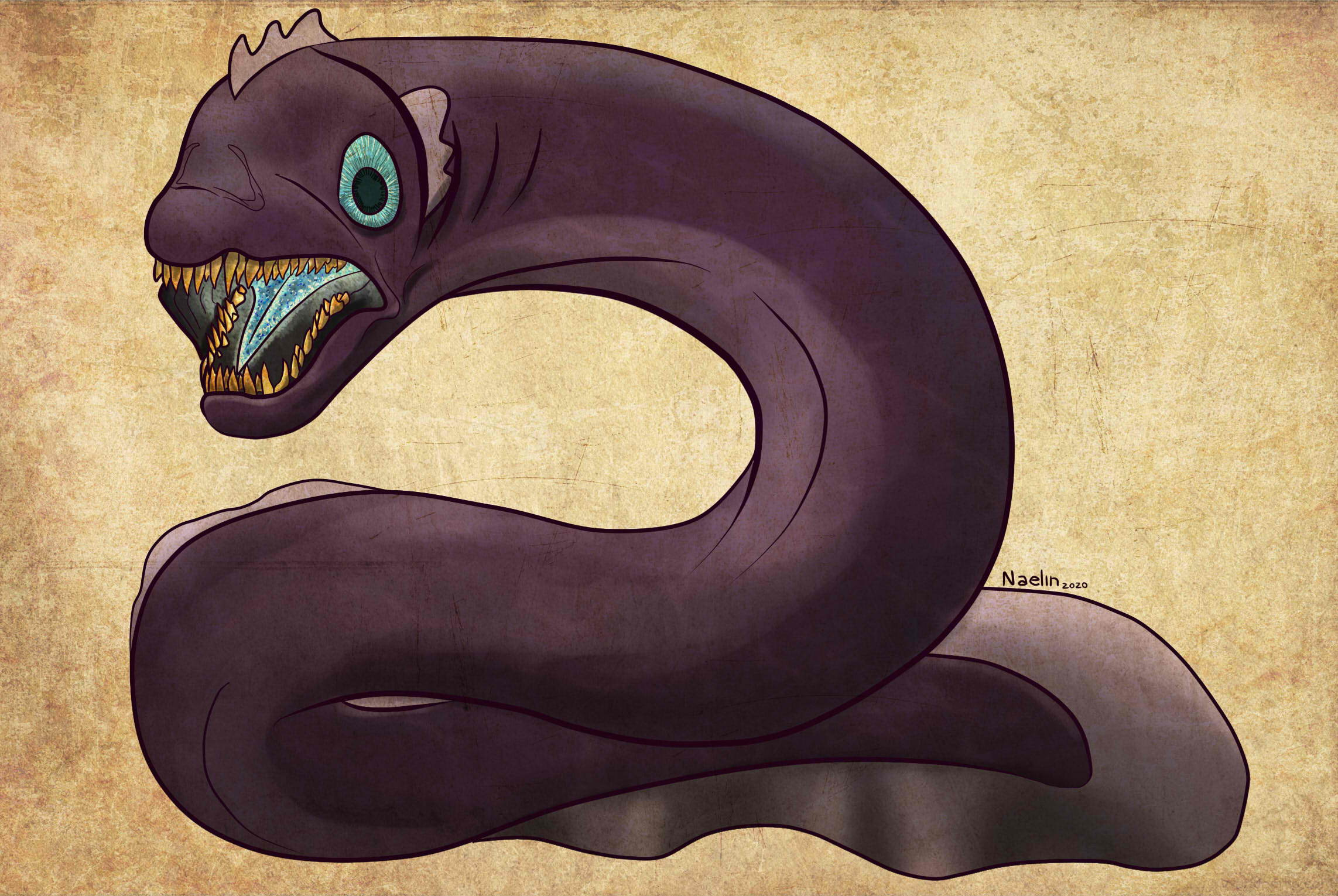Tark
Biology
Anatomy
Tarks are semi-aquatic, cold-blooded, quadruped creatures with short, stubby legs and an elongated body. They have a long and very thick, muscular tail with caudal fins, as well as a dorsal fin.They have a triangular head with no visible neck, and large eyes that may give them a worried look. Their big mouths open wide to show several rows of ever-growing triangular teeth designed to shred meat. They have a rough skin usually blueish gray, though the specific shade and markings vary with the species. On their ventral side the skin forms thicker horizontal bands that stop at their cloacal opening.
Behaviour
Tarks are a simple creature that forms groups to bask on the coasts, though they hunt alone.They live in saltwater, preferring shallow areas as they spend a considerable amount of the day on sandy or muddy beaches, avoiding the rocky areas that can hurt their skin.
They are primarily diurnal. Tarks have a strong feed response and hunt by ambushing their prey when on the coast, and by chasing when in deeper waters. They are also opportunists that use their high underwater speed to surprise larger creatures and take bites out of them, escaping before their prey can react.
Diet
Tarks are obligate carnivores that feed primarily on aquatic and semi-aquatic creatures, ocassionally hunting land creatures that dwell on the beaches. In ocassions where they delve far into the ocean, tarks have been observed taking bites out of darigas of all sizes.Geographic Distribution
Several species of tark can be found in the coasts of the entire Haan Archipelago, though they are much more numerous in the southwest area including Dhalmain, Stunveldt, Ruh, Rosscot and Daltael, while being very rare in Karte and Red Crest.Relationship with Societarians
Tarks pose a danger for the societarians of the coasts due to their reactive behaviour and strong shearing bites. However, tarks don't consider full-grown societarians a prey item and most bites to adults are caused by intentional approach by the societarian. Beachcombing and swimming children are at risk of becoming prey to tarks, for which parents usually don't let kids wade alone on quiet coasts.The creatures are naturally driven away from populated beaches, making the coasts near big settlements safe enough for societarian-tark conflict to be reduced to a minimum.
Tarks as Pets
Some brave waterland silky societarians especially in Dhalmain and Stunveldt have adventured into taming and breeding tarks as pets.The creatures are found to have a relaxed demeanour once tamed and to enjoy pets and belly rubs, but they prove all but impossible to train to respect the lives of small pets and domestic creatures. The caring of the tarks requires an ample supply of meat and constant access to a body of water. Since they are imposing despite their size and potentially very dangerous, they are kept as a status symbol and, rarely, as the guardian creatures of houses set on or alongside water.
Uses
Tarks are hunt in some places for their leather, and their meat is regarded as a delicacy inland, and considered a common food in the coasts of Stunveldt.Their teeth, which they shed often through their entire life, are collected on the coasts and used in jewellery or sold to tourists.
Geographic Distribution




Comments